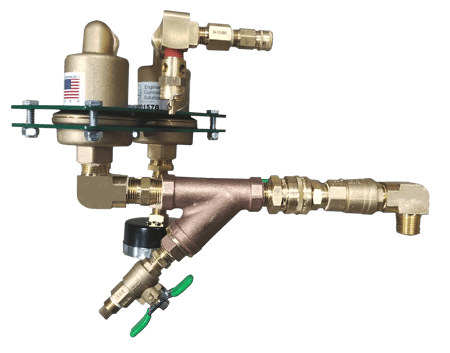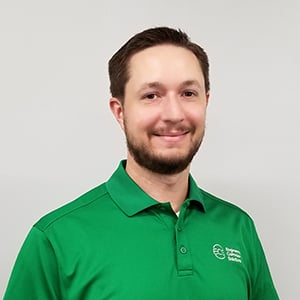Ten years ago, Engineered Corrosion Solutions was asked to provide a solution to a big problem: leaking fire sprinkler systems. The building was a large Home Improvement Center protected by five (5) wet pipe fire sprinkler systems, including overhead and in-rack systems. The customer was experiencing frequent leaks across all systems, with an average repair cost of $1,500 per incident. This does not include costs related to damaged product and business disruption.
System Overview
The fire sprinkler systems were installed with schedule 10 black steel mains and schedule 40 black steel branch lines which are very common material choices for a wet pipe sprinkler system. The overhead systems were relatively large – approximately 1,500 gallons per system and municipal potable water supplied the fire sprinkler systems. Sprinkler system leaks had occurred continuously for several years before our involvement.
Upon gathering all the available data and our review of the system history we determined that the root cause of sprinkler system pipe failure was due to oxygen corrosion. Due to the volume of the sprinkler systems there was a large amount of trapped air, containing 21% oxygen, that migrated to the high points in each system. Each time a system was repaired, drained and then re-filled, additional fresh oxygen became trapped in the system to create an endless cycle of leaks and repairs. The customer was unknowingly fueling the corrosion reaction to continue each time a system was repaired.
Our Solution
Based on the extensive history of corrosion in the building we recommended Wet Pipe Nitrogen Inerting (WPNI). While automatic air vents are highly effective at reducing corrosion in wet pipe fire sprinkler systems, ECS recommends WPNI for existing sprinkler systems that have already been damaged by corrosion because it will stop corrosion completely.
 In March of 2011 the customer installed ECS Protector Nitrogen Inerting Vents (PAV-WN) near the high point of each sprinkler system and ECS Protector Nitrogen Injection Ports at an accessible location on each sprinkler riser (see image to the right). Pressurized nitrogen gas cylinders were used to temporarily provide 99% nitrogen gas during the treatment process. Each sprinkler system was inerted with high purity nitrogen gas, eliminating all trapped oxygen from the systems.
In March of 2011 the customer installed ECS Protector Nitrogen Inerting Vents (PAV-WN) near the high point of each sprinkler system and ECS Protector Nitrogen Injection Ports at an accessible location on each sprinkler riser (see image to the right). Pressurized nitrogen gas cylinders were used to temporarily provide 99% nitrogen gas during the treatment process. Each sprinkler system was inerted with high purity nitrogen gas, eliminating all trapped oxygen from the systems.
An ECS project engineer was on site to ensure the nitrogen inerting protocol was followed and to provide training to both the building owner and fire sprinkler service provider so that the systems would be maintained properly in the future. When the process was complete, the nitrogen cylinders could be removed.
The WPNI Advantage
Fire sprinkler service providers who have performed Wet Pipe Nitrogen Inerting report that the process is both simple and straightforward. The WPNI solution is also significantly less expensive and disruptive than alternative methods that employ chemical additives or pipe coatings. An average wet pipe fire sprinkler system can be fully treated in 2-3 hours and multiple systems can be treated at the same time. For bigger applications where a large number of nitrogen cylinders is required, a permanent house nitrogen supply can be installed to ensure high purity nitrogen gas is available at all times.
Download the full case study below to see the full results of our WPNI solution.


